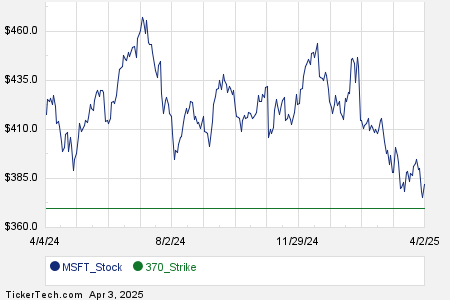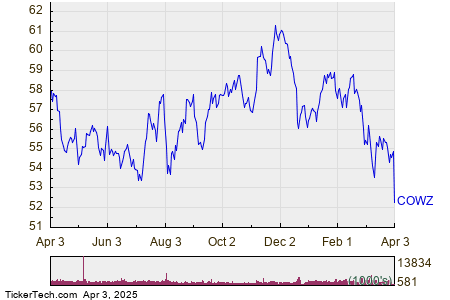Crude Oil and Gasoline Prices Report Moderate Gains Amid Mixed Signals
May WTI crude oil (CLK25) closed Wednesday at +0.51 (+0.72%), while May RBOB gasoline (RBK25) rose by +0.0285 (+1.24%). These movements indicate gradual increases in both crude oil and gasoline prices, with gasoline reaching a nearest-futures high not seen in seven months. A decline in the dollar index (DXY00) to a 1.5-week low served as a supportive factor for crude prices.
Additionally, the release of stronger-than-expected U.S. economic data, including March ADP employment figures and February factory orders, positively impacted energy demand and crude prices. Specifically, the March ADP employment change reported a rise of +155,000, exceeding expectations of +120,000, and February factory orders increased by +0.6% month-over-month, above the anticipated +0.5%.
Crude Pricing Dynamics and Market Influences
A boost in the crude crack spread to a five-week high is also seen as a bullish sign for crude pricing. The elevated crack spread encourages refiners to purchase more crude oil to convert into gasoline and distillates. However, concerns about U.S. tariffs potentially inciting a trade war that could undermine global growth and energy demand remain a bearish factor.
Crude prices found support from geopolitical tensions, especially following President Trump’s remarks expressing his frustration with Russian President Putin over the failure to agree on a ceasefire in Ukraine. Trump mentioned considering “secondary tariffs” on Russian crude exports if progress remains stunted.
Storage Levels and Supply Concerns
The global decline in crude oil stored on tankers is another positive signal for oil prices. Vortexa reported a 5.5% week-on-week decrease in stationary tanker storage, bringing the total down to 55.67 million barrels as of March 28. Moreover, U.S. sanctions on a China-based oil refinery and several entities tied to Iranian crude oil transport are putting pressure on Iranian crude exports.
According to Rystad Energy A/S, this maximum-pressure campaign could potentially remove as much as 1.5 million barrels per day (bpd) of Iranian crude from global markets, which is seen as a bullish factor for crude pricing. Additionally, ongoing tensions in the Middle East, particularly related to Israel’s military actions against Hamas and U.S. strikes on Houthi rebels in Yemen, contribute to concerns about supply disruptions.
OPEC+ and Global Supplies
Nevertheless, increased Russian oil exports present a negative aspect for crude prices. Data from Vortexa indicated that Russian oil product exports reached a five-month high of 3.45 million bpd in March. Furthermore, OPEC+ announced on March 3 that it would resume some halted crude production in April, adding 138,000 bpd. This marks the first phase in a series of planned monthly production increases, which may restore a total of 2.2 million bpd by 2026. OPEC’s crude production was noted to have risen by +80,000 bpd to a thirteen-month high of 27.43 million bpd.
Market Outlook and Inventory Trends
The implementation of new U.S. sanctions on Russia’s oil sector on January 10 aimed to further limit global oil supplies. These measures impacted Gazprom Neft and Surgutneftgas, restricting approximately 970,000 bpd of Russian crude exports in the first ten months of 2024, as detailed by Bloomberg. Recent data also showed a weekly rise of +40,000 bpd in Russian crude exports, totaling 3.07 million bpd for the week ending March 30.
On the demand side, signs indicate a slowdown in crude oil demand from China, the world’s leading crude importer, with imports decreasing by -1.9% year-over-year to 553 million metric tons in 2024. This decline is considered a bearish signal for oil prices.
As for U.S. supply, the weekly EIA report released on Wednesday leaned bearish, revealing an unexpected increase of +6.17 million barrels in EIA crude inventories to an eight-month high, contrasting with expectations of a -500,000-barrel draw. Additionally, distillate stockpiles unexpectedly rose by +246,000 barrels against expectations of an -800,000-barrel draw, while crude supplies at Cushing increased by +2.37 million barrels.
This report noted that U.S. crude oil inventories as of March 28 were -4.6% below the seasonal five-year average, while gasoline inventories rose +2.0% above the average. Distillate inventories were -6.0% under the five-year seasonal average. U.S. crude oil production held steady at 13.58 million barrels per day, slightly below the record high of 13.631 million barrels per day set in December.
Additionally, Baker Hughes reported a decrease of -2 active oil rigs in the U.S. for the week ending March 28, bringing the count to 484, which remains above the three-year low of 472 rigs recorded on January 24. The number of U.S. oil rigs has diminished from the four-and-a-half-year high of 627 rigs reached in December 2022.
On the date of publication, Rich Asplund did not hold any positions in the securities mentioned in this article. All information and data presented are for informational purposes only. For more information, please view the Barchart Disclosure Policy
here.
The views expressed herein are those of the author and do not necessarily reflect those of Nasdaq, Inc.


